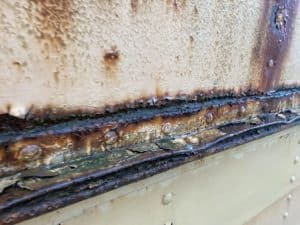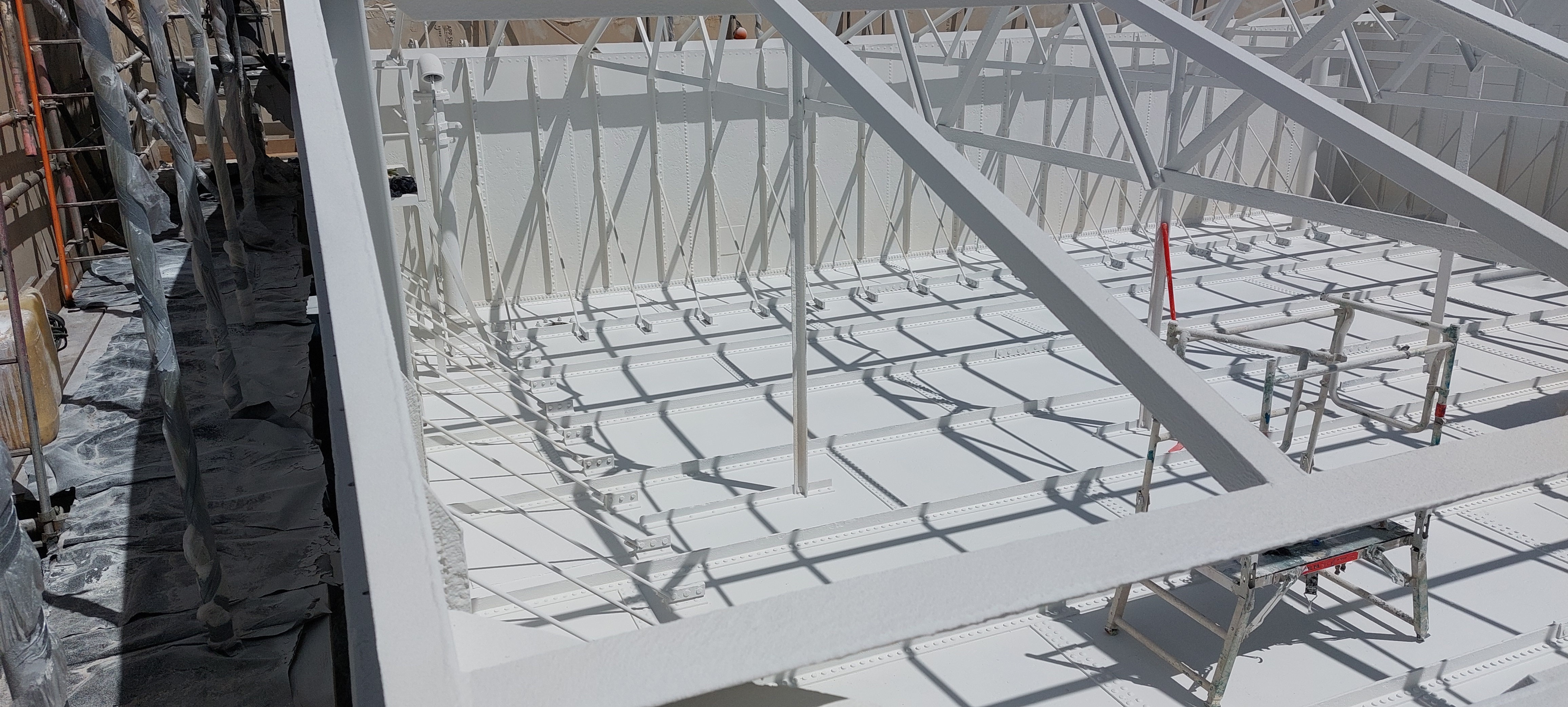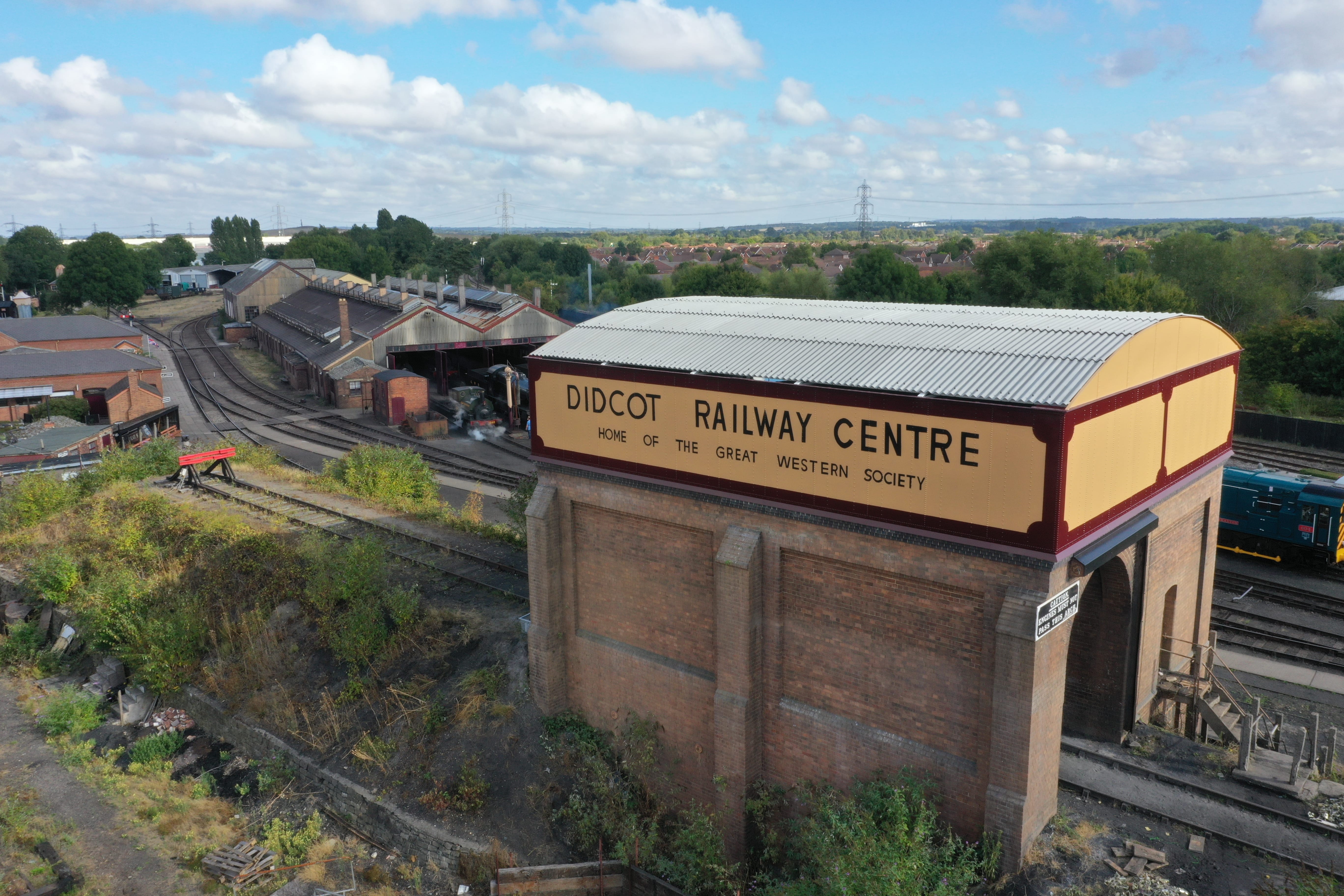Steam train refuelling tower restoration
The water tank at the UK’s Didcot Railway Centre was exhibiting heavy corrosion and leaking, requiring significant refurbishment.
The tower, which was constructed in 1932, also incorporates a coal stage beneath for refuelling steam trains. This Grade II listed water tank and coal stage required significant refurbishment to allow their continued use serving the Great Western Society and its fleet of steam engines. Internally, the tank was lined with a thin film bitumen coating, and a coating system which had incorporated a red lead primer had been applied externally in the 1980s. This presented a health hazard that needed careful consideration, given the close proximity of the museum and Didcot Parkway train station.
A particular and unique challenge for this tank lining and protective coating contract was that all the plant, equipment and materials had to be brought into the site by train as there is no access by road.

The solution
Corroless Eastern proposed the removal of all existing coatings, followed by the application of Eon Coat – a revolutionary steel protective coating that permanently protects steel and iron assets by alloying the surface of the steel. Due to the presence of lead-containing coatings and also the inability to fully encapsulate the tower, it was proposed to use ultra-high-pressure water jetting to remove the existing coatings. On aged steel with sufficient surface profile, this is the perfect preparation for Eon Coat, as the material requires some surface corrosion present for optimum bonding to the steel substrate.
Following the removal of the existing tank lining and protective coatings, Corroless Eastern did however uncover something very unusual that it had not experienced before. Both the tank internals and externals exhibited corrosion and delamination of the steel layers. After some investigation and consultation with industry experts and engineers, it appeared that the water tank may have been constructed from recycled armour plate from World War I. This is formed by laminating layers of steel and then forging them together. The layering process prevents the penetration of bullets. To ensure an effective tank lining and protective coating application, these sharp edges needed to be removed to expose the corroded steel beneath and provide a thickness of steel sufficient to protect.
Initially, Corroless Eastern explored removing these areas using an abrasive wheel. However, during the trial it was found that this was too aggressive and the heat energy imparted caused further delamination of the steel layers. Fortunately, the company already had some new steel plating which had been installed that required abrasive blasting to remove mill scale prior to the tank lining application. With the equipment already transported to the site by train for this application, a trial was undertaken to see if it were possible to feather back these areas of delamination. By experimenting with abrasive blasting aggregate size, flow and air pressure, Corroless Eastern was able to carefully feather back these areas to a point where delamination was no longer occurring and the corrosion deposits were removed from the steel surface. As part of the company’s standard quality assurance procedures, the climatic conditions were tightly monitored to ensure compliance with Eon Coat’s recommendations. Unusually for a tank lining project, the wind speed had to be closely monitored, as specified by Eon Coat, to prevent the material drying out too quickly.
Installing the Eon Coat tank lining
One of the key benefits of Eon Coat for this tank lining and protective coating application was that it likes being applied to corroded steel – it actually needs a degree of surface rusting. This was perfect for a tank lining which was exposed to the elements and could not be controlled with dehumidification equipment. Eon Coat was applied as a tank lining internally and as a primer to the tank externals. Eon Coat is applied by plural spraying due to the fast gel time of the material. It was perfect for application to the highly pitted internals as the chemical reaction with the steel surface gets to the deepest parts of the surface profile, unlike conventional protective coatings and tank linings. Eon Coat is applied to a thickness of 500µm, which was checked during application using a wet film thickness gauge. This was then confirmed following cure using a dry film thickness gauge as per best tank lining practice. Intricate areas were further detailed using the cartridge gun system, particularly around the backs of brackets and stays.

Tank base solution
As part of the refurbishment works a new flashing detail was fitted to the base of the water tank externally. As the bottom of the tank, which is supported by brick walls, could not be accessed, this area was treated using Corroless CCI 400, containing Corroless VCI technology. Corroless VCI technology works by emitting a vapour which forms a microscopic layer on metal surfaces. This layer has considerable anticorrosive properties and prevents steel and other metals from corroding. Therefore, not only surfaces which are in direct contact with the Corroless product, but also areas in contained void or airspaces above the product, will be protected from corrosion. The new flashing detail was installed by bolting through the water tank, to avoid damaging the protective coatings and tank lining by welding. As part of the installation Corroless Eastern assisted with the sealing operation by wet-fitting the flashing using a polyurethane sealant. Once cured, each fixing was then further sealed by locally applying two coats of Corroless ACO, a flexible polyurethane tank lining that is ideal for sealing operations.
Decorative finish
Sherwin Williams Acrolon 7300 Acrylic Polyurethane finish was applied in two coats, with the first coat being diluted to aid adhesion to the Eon Coat to provide the required decorative finish. The decorative border was carefully masked from measurements taken prior to preparation and applied using the same material. The company cannot take credit for the sign writing as this was undertaken by the museum’s own volunteers – using material provided by Corroless Eastern.
This was one of the most interesting and unusual tank relining and protective coating projects Corroless Eastern has ever been involved in. It was not without its challenges, given the rail access only and the exceptionally hot 2022 summer. However, the company believes that the results speak for themselves and the use of a pioneering technology in the form of Eon Coat will provide corrosion protection for many years to come.

default

